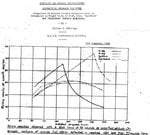A pilot who was at Java described a Hurricane coming in to land when some Oscars suddenly appeared and set the Hurricane on fire. The pilot pulled up to about 800 ft and bailed out successfully. The Oscar then pulled up sharply and broke up
This account is from Terence Kelly's, "Hurricane Over the Jungle", he was an eye witness to the event. The Hurricane pilot was 258 squads Flt Sgt Scott , who was on his final landing approach when he was bounced. In his follow up book "Battle for Palembang", Kelly identifies the Japanese pilot as LT Masabumi Kunii, of the 64 Sentai.( fromYasuo Izawa"s Combat Diary).

